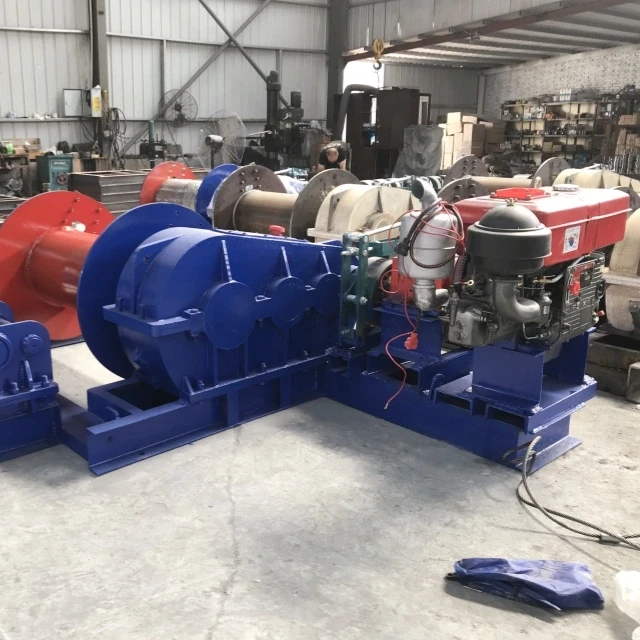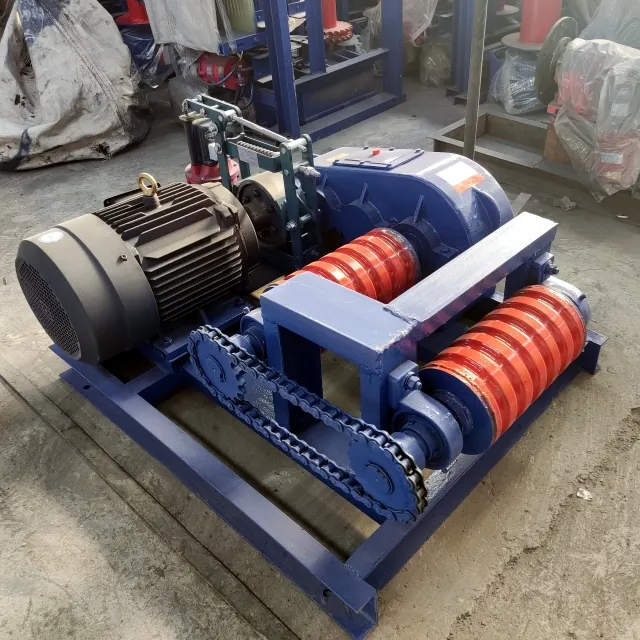When handling multi-ton loads in mining, construction, or bridge engineering, a single misstep can lead to catastrophic failures. Slow-speed winches have emerged as indispensable tools for preventing such disasters by combining controlled movement with fail-safe mechanisms. This article explores why industries increasingly rely on these systems and how to select the right equipment for high-stakes projects.
Why Slow-Speed Winches Are Essential for Heavy-Duty Industries
In environments where loads exceed 50 tons, speed isn’t the priority—control is. Slow-speed winches prioritize torque over velocity, ensuring stability during critical lifts.
How Controlled Speed Prevents Accidents in Complex Hoisting
- Mitigates Load Sway: Rapid acceleration creates pendulum-like swinging, destabilizing cranes or rigging systems. Slow, incremental movements keep loads steady.
- Reduces Structural Stress: Sudden jerks from high-speed winches can exceed a structure’s load-bearing capacity. Hydraulic systems in slow winches distribute force evenly.
- Enables Precision Placement: Installing bridge segments or mining equipment often requires millimeter-level accuracy, achievable only with gradual adjustments.
Did You Know? A 2021 study found that 37% of crane-related accidents occurred due to uncontrolled load movements—a risk minimized by slow-speed systems.
Torque vs. Speed: Balancing Power and Precision
High-torque winches excel in scenarios demanding raw power, such as:
- Dragline Operations: Extracting minerals in mining requires sustained pulling force.
- Vertical Lifts: Hoisting prefabricated bridge sections demands consistent torque to counteract gravity.
Key safety features like automatic drum brakes and remote operation (cited in industry references) further enhance reliability.
Selecting the Right Winch for Mining and Construction Projects
Not all winches are created equal. Compliance with safety standards and project-specific needs dictate the ideal choice.
Compliance with Industry Safety Standards (e.g., OSHA, ISO)
Regulatory bodies mandate:
- Load Limiters: Prevent operation beyond safe capacity.
- Emergency Stop Systems: Allow immediate halting during malfunctions.
- Corrosion Resistance: Critical for mining winches exposed to abrasive materials.
Brands like Garlway integrate these features into their winch designs, aligning with OSHA’s guidelines for heavy machinery.
Case Study: Stabilizing Loads in Bridge Construction
When the Golden Bay Bridge was constructed, engineers used slow-speed winches to:
- Lower Precast Segments: Each 80-ton piece required 30+ minutes of controlled descent.
- Align Girder Connections: Precision placement reduced post-installation adjustments by 60%.
As referenced in industry reports, such winches cut construction timelines from months to weeks while enhancing safety.
Key Takeaways: Optimizing Industrial Winch Performance
- Prioritize Control Over Speed: Slower movements prevent load sway and structural damage.
- Verify Compliance: Ensure winches meet OSHA/ISO standards for your industry.
- Leverage Safety Tech: Remote operation and automatic brakes are non-negotiable for high-risk sites.
For industries where lives and million-dollar projects hang in the balance, slow-speed winches aren’t just tools—they’re safeguards against the unpredictable.
Final Thought: How might your current lifting operations benefit from the precision of a torque-focused winch system?
Related Products
- Ready Mixer Machine for Construction Ready Mix Machinery
- Small Electric Winch 120V and 240V for Compact Applications
- Electric and Hydraulic Winch for Heavy Duty Applications
- Warn Winch Windlass Boat Trailer Winch
- Portable Small Trailer Winch
Related Articles
- How to Build an OSHA-Compliant Safety System for Concrete Mixer Workspaces
- How to Master Concrete Mixer Operation: Training, Certification, and Safety Protocols
- How to Choose Concrete Mixers for Long-Term Reliability and Cost Savings
- How Ignoring Concrete Mixer Manuals Endangers Workers and Invites Legal Consequences
- Optimizing Concrete Mixer Safety: How Proactive Tire and Suspension Maintenance Prevents Catastrophic Failures














